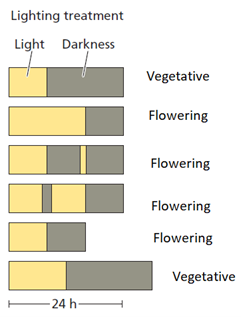#Question id: 11799
#Unit 6. System Physiology – Plant
Companion cells in minor veins of mature leaves.
All three cell types have dense cytoplasm and abundant mitochondria, there are
three types companion cells present in
column A while its characteristics given in column B;
COLUMN A COLUMN B
A)
Ordinary companion cells i) appear well suited for taking up solutes
via cytoplasmic connections numerous plasmodesmata connecting them to bundle
sheath cells. Its having numerous small vacuoles, as well as poorly developed
thylakoids.
B)
Transfer cells ii) have chloroplasts with
well-developed thylakoids and a cell wall
with a smooth inner surface. The number of plasmodesmata connecting ordinary
companion cells to surrounding cells.
C) Intermediary cells iii) the development of fingerlike wall in growths, particularly on the cell Walls. These wall ingrowths greatly increase the surface area of the transfer cell’s plasma membrane, few plasmodesmata connect this type of companion cell to any of the surrounding cells except its own sieve element.
Which of the following correct combination;
#Question id: 11800
#Unit 6. System Physiology – Plant
There are at least three different types of companion cells in the minor veins of mature, exporting leaves. Which of the following statements about these companion cells is CORRECT?
#Question id: 11801
#Unit 6. System Physiology – Plant
Which one of the following compound most commonly transported in sieve elements of the phloem?
#Question id: 11802
#Unit 6. System Physiology – Plant
Damaged sieve elements are sealed off, but because of the processs that plug sieve plates pores, excuded phloem sap from wounds that sever sieve elements. Exudation of sap enhanced by the inclusion of;
#Question id: 11803
#Unit 6. System Physiology – Plant
Due to damage exudation of sap from cut petioles or stems takes place they can be collected. However, quantities of collected sap are small, and the method is technically difficult. A preferable approach for collecting exuded sap is to use an
#Question id: 11804
#Unit 6. System Physiology – Plant
P-proteins have been characterized at the molecular level. P-proteins from the genus Cucurbita consist of two major proteins;

